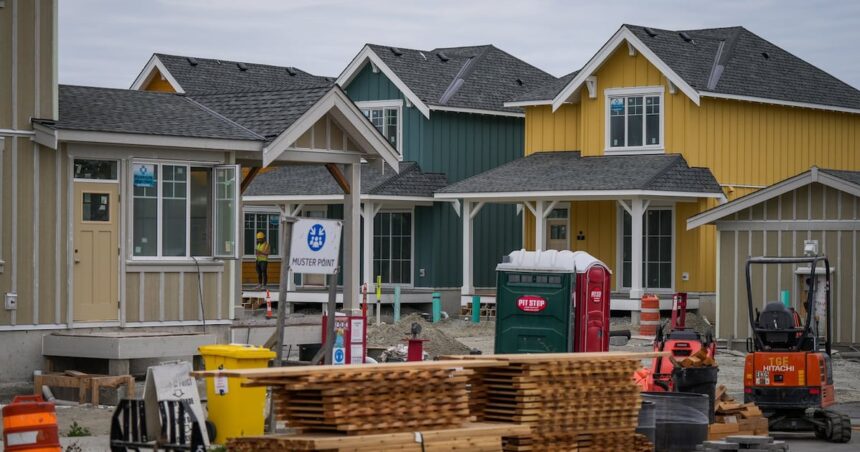In a housing market that continues to navigate challenging economic headwinds, Canada’s homebuilding activity showed unexpected resilience last month. The Canada Mortgage and Housing Corporation (CMHC) revealed today that housing starts across the country increased by 0.4 percent in June 2025, offering a glimmer of optimism in what has been an otherwise turbulent year for residential construction.
According to the federal housing agency’s latest report, the seasonally adjusted annual rate of housing starts reached 213,350 units in June, up from May’s revised figure of 212,500 units. This modest gain comes amid persistent concerns about affordability, labour shortages, and rising construction costs that have hampered growth in new housing supply.
“The marginal increase we’re seeing suggests builders are finding ways to adapt to current market conditions despite ongoing challenges,” said Marcus Thornhill, CMHC’s chief economist. “While not the robust growth we’d like to see to address housing supply issues, any upward movement in the current economic climate is noteworthy.”
The report indicates significant regional variations, with Ontario and British Columbia posting more substantial gains of 3.2 percent and 2.7 percent respectively, while Alberta experienced a 1.8 percent decline. Quebec remained relatively stable with a slight 0.3 percent increase in new construction activity.
Multi-unit developments, including condominiums and rental apartments, continued to drive most of the growth, increasing by 1.2 percent nationally. Meanwhile, single-detached home construction decreased by 0.7 percent, reflecting ongoing land constraints in major urban centers and shifting consumer preferences toward more affordable housing options.
Industry analysts point to several factors contributing to the modest uptick. The Bank of Canada’s interest rate adjustments earlier this year have provided some breathing room for developers and homebuyers alike. Additionally, targeted government initiatives aimed at accelerating approvals and reducing regulatory barriers appear to be yielding incremental results.
“We’re seeing the early impacts of streamlined approval processes in certain municipalities,” noted Jordan Carlson, senior economist at Toronto’s Urban Development Institute. “Projects that had been stalled in regulatory limbo are finally breaking ground, contributing to these improved numbers.”
Despite the positive monthly figure, year-over-year comparisons reveal a more sobering reality. Housing starts remain 8.3 percent below June 2024 levels, highlighting the persistent challenges facing the residential construction sector as it struggles to meet Canada’s growing housing demand.
Housing affordability continues to be a critical national issue, with the federal government recently announcing additional measures to stimulate construction. These include expanded tax incentives for purpose-built rental developments and increased funding for affordable housing initiatives across provinces.
Business analysts suggest that while the modest increase in housing starts is encouraging, substantially more construction activity will be needed to address Canada’s structural housing shortage, estimated at 3.5 million units by 2030 according to recent research.
The construction industry itself faces ongoing challenges that limit its ability to ramp up production quickly. Supply chain disruptions, though improved from pandemic-era bottlenecks, continue to affect material availability and pricing. Meanwhile, skilled labour shortages remain acute in most major markets.
“We’re operating at near capacity with our current workforce,” explained Samantha Chen, president of the Canadian Homebuilders Association. “Even with strong demand and improved financing conditions, there’s a ceiling to how quickly we can increase output without addressing fundamental labour market constraints.”
As municipal governments, provinces, and the federal administration continue to grapple with housing supply issues, these monthly indicators will be closely watched for signs of sustainable improvement. The slight increase in June provides cautious optimism, but substantial challenges remain in addressing Canada’s persistent housing shortage.
What remains to be seen is whether this uptick represents the beginning of a meaningful trend or merely a temporary reprieve in what has been a challenging environment for housing development. Can policymakers translate these early positive signals into the sustained building boom Canada needs to address its critical housing shortage?
























